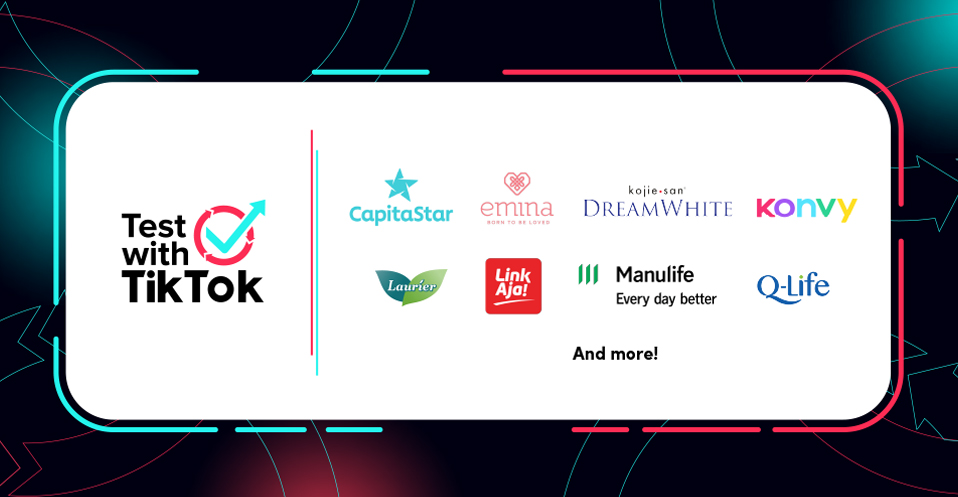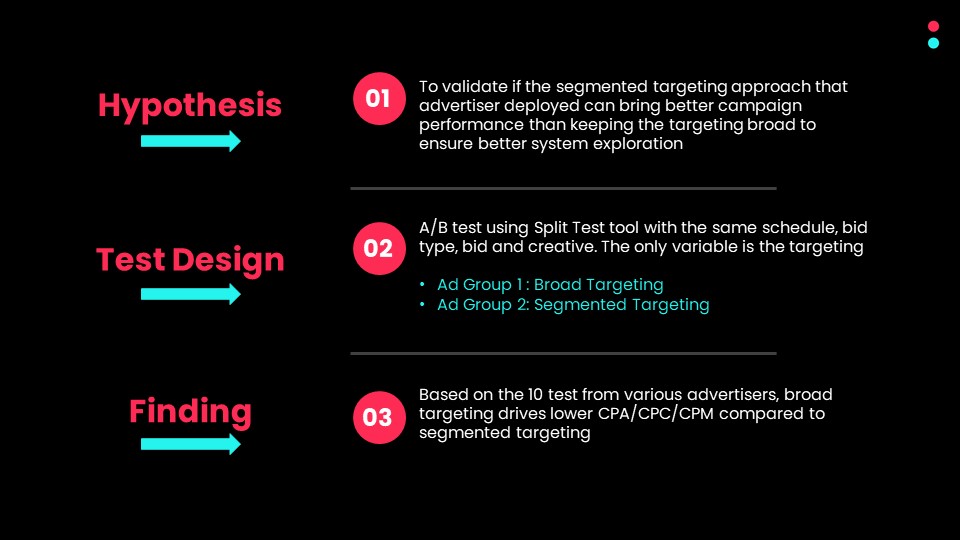Test With TikTok: Unlock Your Ad's Full Potential
TikTok For Business is delighted to unveil Test With TikTok, a new content series for growth-minded brands and agencies across Southeast Asia (SEA).

TikTok For Business is delighted to unveil Test With TikTok, a new content series for growth-minded brands and agencies across Southeast Asia (SEA). We'll be guiding you through our suite of innovative advertising solutions and examining all the finer details. In short, we'll show you how to drive real-world business results through our platform, with full-funnel marketing strategies.
What's Test With TikTok?
Test With TikTok is an initiative to encourage experimentation amongst marketers. It helps advertisers in SEA achieve more with TikTok solutions and enhance performance of your marketing campaigns. We work with you to deliver returns on your investment, and prime audiences for your messaging on other platforms. We'll be offering tips and tricks for boosting your brand, driving sales, and growing your business on TikTok.
To launch this series, we collaborated with dentsu SEA to leverage their platform expertise and maximise our platform solutions. This first post explores whether brands gain more from targeting broad or segmented audiences with In-Feed Ads on TikTok. Answers and advice below.
Broad Targeting Outperforms Segmented Targeting
We worked with media agency Dentsu, and discovered that targeting a broader audience with In-Feed Ads achieves higher effectiveness across a range of metrics compared to targeting specific, segmented audiences.
Test Design
Dentsu worked with 10 advertisers to test and compare broad and segmented targeting approaches, to find out which offered better campaign performance. We designed an A/B test with our Split Test tool, creating two variations of each advertiser's campaign. Both campaigns had the same schedule, bid type, bid, and creatives. The only variable was the targeting approach.
For reference, broad targeting lets the TikTok system explore different audience segments to figure out the best possible segments for the advertiser's specific objective (e.g. reach, traffic, or app installs). The segmented targeting approach is when advertisers choose their target audience niches in advance.

Results Deep Dive
Broad targeting improved metrics across the board, including cost per click (CPC), cost per install (CPI), cost per thousand impressions (CPM), and cost per reach (CPR), compared to segmented targeting. No matter the campaign objective, broad targeting always came out on top.
Here are some of the key takeaways:
Over-narrowing your target audience can limit reach
For brands with Reach objectives, targeting a broader audience saw a 20% drop in CPM compared to the segmented approach. In short, it took less money to reach more people. But for some brands, targeting a niche audience might still be a better fit for their long-term goals. Ultimately, there's always a trade-off between audience size and CPM, as there's more competition to reach niche audiences, increasing CPM.

Broad targeting can improve CPC and CPI
For advertisers with Traffic objectives, CPC dropped by up to 55% when broad targeting. They also achieved a higher click-through rate, as compared to segmented targeting.
Advertisers with App Install objectives achieved lower CPI when targeting a broader audience. This held true whether advertisers used Lowest Cost or Cost Cap bid strategies.


How to Unlock Your Ad's Full Potential on TikTok
Advertisers often assume that copying existing targeting settings from other platforms will make their lives easier. But this approach can result in over-narrowing the target audience and missing out on more potential engaged users on TikTok.
For example, in one test campaign for a financial technology brand, Apparel & Accessories as well as Beauty & Personal Care interests were among the best-performing segments in the broad targeting ad group. However, as the advertiser was copying learnings from other media platforms, these segments were not included in the segmented targeting ad group, resulting in higher CPI for that group.
Get the most out of your targeting strategies by experimenting
1. Start with broad demographics targeting
Avoid over-narrowing your target audience. Let your campaigns explore different segments of the audience that resonate with your creatives.
2. Analyze various audience segments’ performance
Our audience breakdown feature provides the performance breakdown of interest and behavior segments on the campaign, ad group, and ad level. You can analyze the performance of various audience segments from your existing campaign.
3. Refine the targeting for future campaigns
Leveraging learnings from previous TikTok campaigns, create additional ad groups targeting the best-performing interest/behavior segments. Because some interest/behavior audiences can be too small to generate scale, it’s important to avoid over-narrowing your target audience.
It's Time to Think TikTok First
Based on these findings, advertisers should be prepared to unlearn practices developed on other platforms, and think TikTok first. The platform's highly engaged communities and innovative advertising solutions offer new opportunities, requiring different approaches, to unlock the full potential of your campaigns.
Stay tuned for more updates and advice from Test with TikTok.
Read more case studies here and sign up to start advertising on TikTok in minutes.
About Dentsu X TikTok Partnership
Dentsu and TikTok have forged a regional partnership aimed at driving media and commerce excellence for clients. The partnership kickstarted in SEA and enables Dentsu's clients to leverage TikTok’s strengths as an advertising platform to deliver best-in-class capabilities across commerce, creativity, and creator marketing to drive brand outcomes at scale. The 'Test with TikTok' program is a key aspect of the partnership and an engine to test out several performance and commerce hypotheses on the TikTok platform.
Anchor on the Testing Structure
